Comparing different stacking functions
This article will once again focus on the focus stacking function in various software products.
Introduction
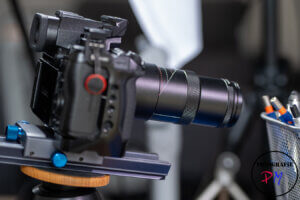
Focus stacking has been a topic here on the blog several times. Among other things, I once conducted a comparison between Luminar Neo and Helicon Focus, but also several years ago I conducted a comparison between Helicon Focus and the then Photoshop, at least the version of Photoshop didn’t fare so well at the time.
However, the programs continue to evolve, so it was certainly time to make some comparisons between the programs again.
I also recorded a video about it:
The Candidates
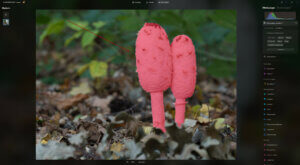 In this comparison, Photoshop, Helicon Focus, Affinity Photo, Luminar Neo, and last but not least, ON1 Photo RAW will be used. I used a basic set of classic stack shots, i.e., close-up and macro shots, but also shots where the shots were taken handheld, for example. In addition, landscape shots were also used, where only 2 or 3 shots belong to a stack, which ultimately only serves to capture both the foreground and background in focus.
In this comparison, Photoshop, Helicon Focus, Affinity Photo, Luminar Neo, and last but not least, ON1 Photo RAW will be used. I used a basic set of classic stack shots, i.e., close-up and macro shots, but also shots where the shots were taken handheld, for example. In addition, landscape shots were also used, where only 2 or 3 shots belong to a stack, which ultimately only serves to capture both the foreground and background in focus.
Helicon Focus
Helicon Focus is certainly the top dog among these programs and is absolutely specialized in focus stacking.
In the comparison at the time, it was also the fastest program, meaning it could, for example, combine a stack of 10 or 20 shots in the shortest time. This is still the case today. Helicon Focus is available for both Windows and macOS.
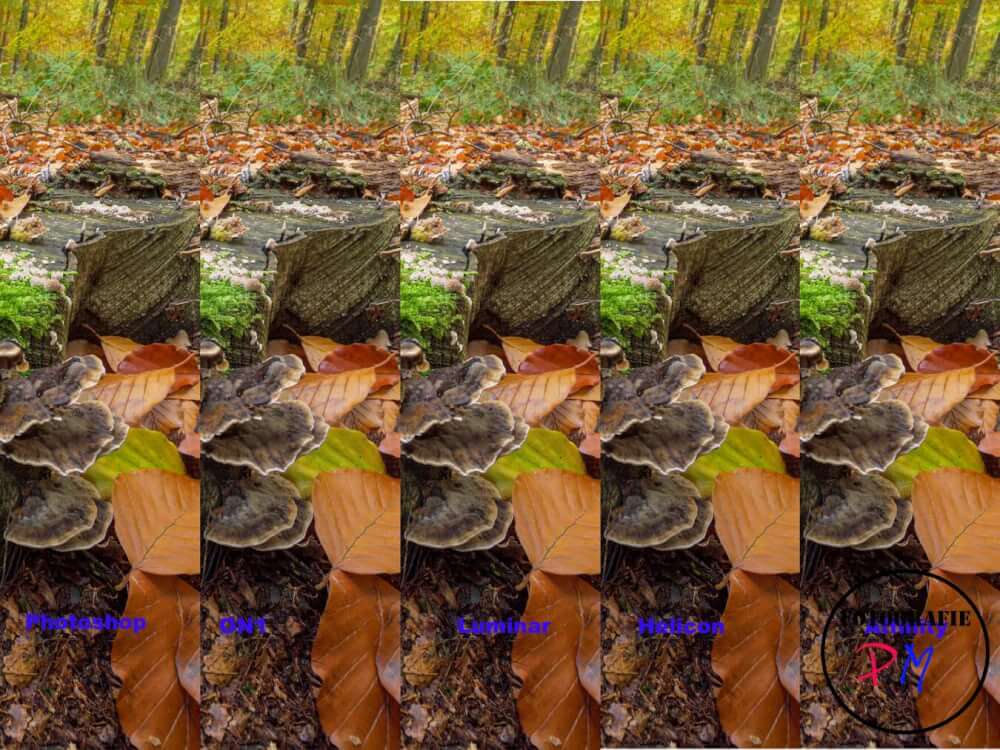
Luminar NEO
For Luminar Neo, you need an additional module to make stacking possible at all. The program, or rather the module, is relatively slow but produces decent results. Luminar NEO and the module are also available for Windows and MacOS.
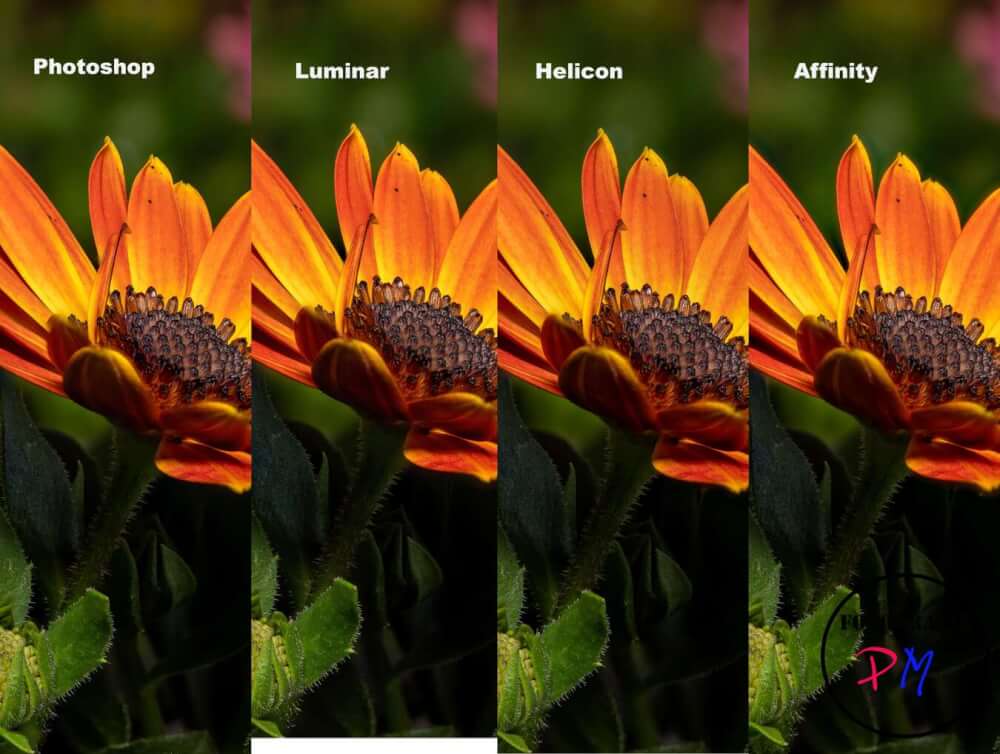
Compared to the other programs, however, the resulting image is likely always slightly reduced in size or dimensions to compensate for the individual images. If I perform the stack with images from my Lumix S 5, which is known to have a resolution of 6000 x 4000 pixels, the resulting image in Luminar will always be relatively smaller.
On1 Photo RAW
I actually only installed the 2025 version of the program once for testing, and of course, I also tried out the stacking function. However, it is noticeable that ON1 Photo RAW cannot combine stacks consisting of more than approximately 14-15 images.
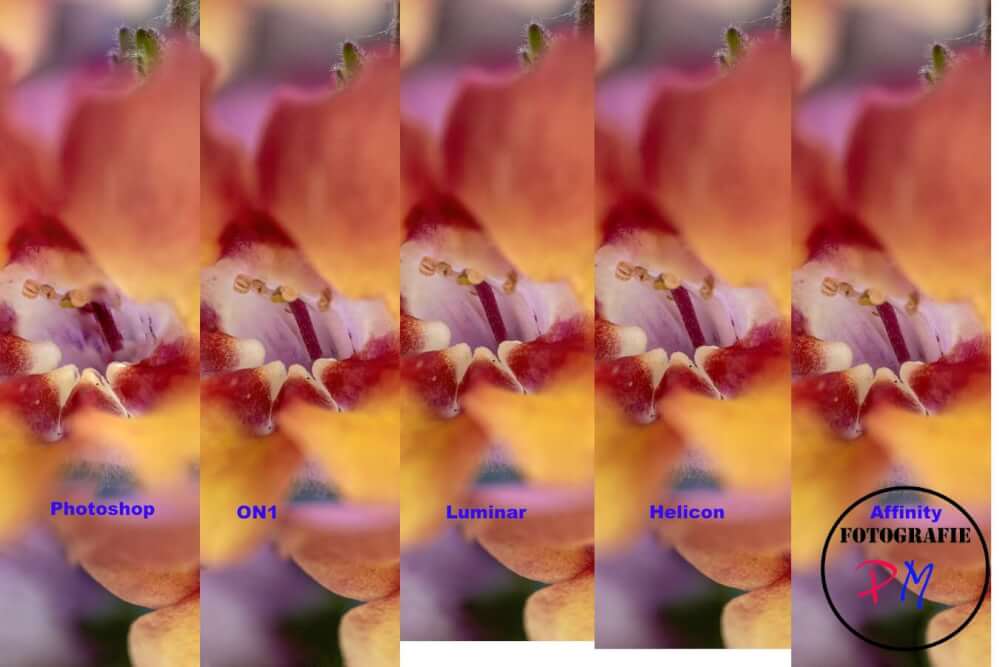
I haven’t been able to find any documentation on the actual limit here. But in my experience, it’s around 14 or 15 images in this range, and it seems that the number of images that can actually be processed may also depend somewhat on the resolution. RAM can’t be the problem, though.
ON1 Photo RAW is available for both Windows and MacOS.
Photoshop
In contrast to the previous comparison, the stacking module in Photoshop has really matured, and the results can be described as quite good, even if Photoshop obviously can’t match the results of the specialized program Helicon Focus.
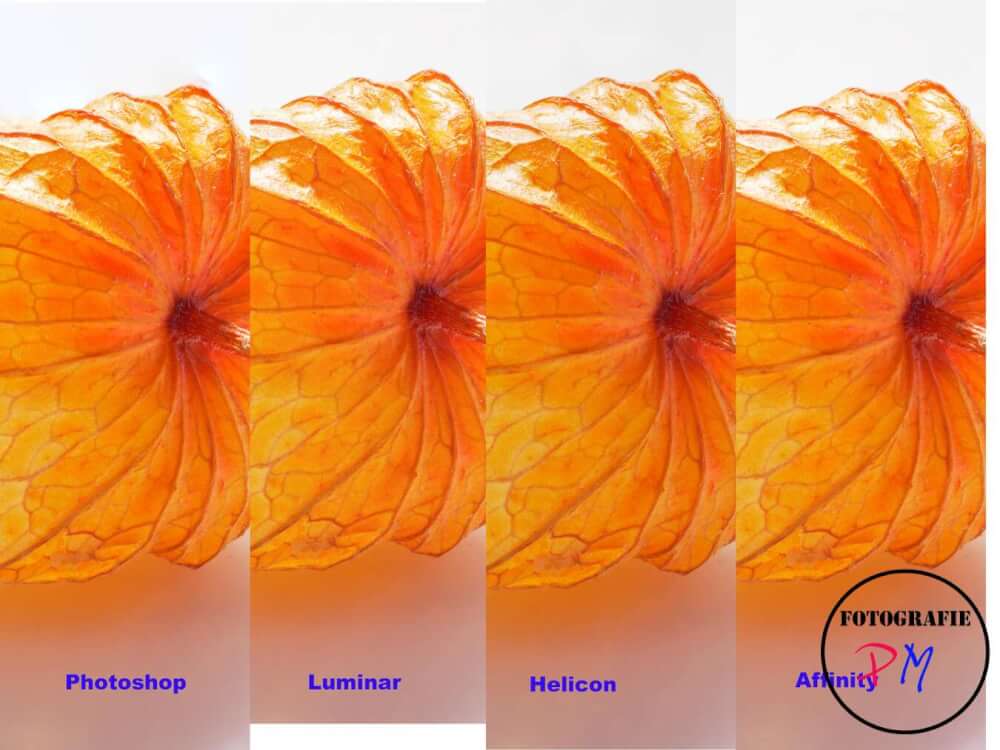
However, for those who have a Lightroom subscription, for example, which includes Photoshop, it is certainly an alternative to try out focus stacking with good results.
Here, too, it’s available for both Windows and MacOS.
Results
I’ve uploaded various images stacked with all the programs above for each program so everyone can get an idea for themselves. If you want to rate the programs, Helicon Focus takes first place due to both its high speed and precision.
Unfortunately, ON1 Photo RAW takes last place because the results a) weren’t as good in some areas, but b) it’s also limited to a relatively small number of base images.
Places 2, 3, and 4 are shared by the other programs, although I find it difficult to establish a clear ranking based on the results. It sometimes depends on the image, whether, for example, Photoshop or Luminar NEO is a bit better than the other program.
Conclusion
There has been a truly noticeable improvement, especially in Photoshop. Luminar NEO, or rather the stacking module, has hardly undergone any development. Luminar Neo is also quite good, but in terms of speed, it remains roughly at the same level as the results I experienced more than a year and a half ago.
This little comparison confirmed that my choice of Helicon Focus was definitely the right one, although other photographers might prefer the competing product Zerene Stacker.
ciao tuxoche



